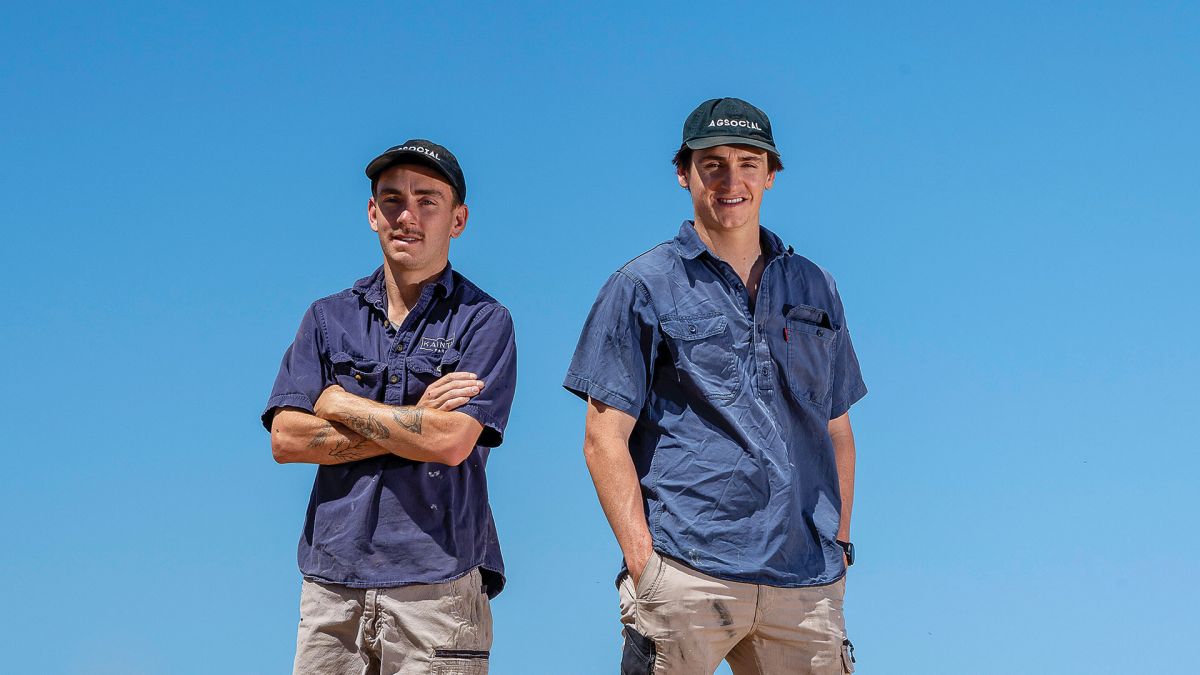Tapping local drainage knowledge turns on an opportunity

Brothers Tom and Riley Curnow expect their investment in drainage will have an excellent ROI. Photos: Evan Collis
Western Australian grain growers Riley and Tom Curnow have faced costly waterlogging challenges on their Merivale property, east of Esperance, but a willingness to trial new approaches is helping them turn a headache into an opportunity.
The Curnows crop 3600 hectares across properties at Scaddan, Neridup and Merivale in the state’s south-east.
Average annual rainfall exceeds 600 millimetres at Merivale – inland from Cape Le Grand and squarely in the high-rainfall zone – which makes it particularly prone to waterlogging.
To address the challenge, the brothers have adopted a suite of strategies, many informed by recent GRDC-backed research, which includes deep ripping, surface drains, subsurface tile drains and late sowing of cereals in waterlogged paddocks.
Their first step was to deep rip to 600mm, a common practice among the district’s growers. This has delivered significant yield gains for the affordable outlay of about $100/ha.
“It has had a massive impact on yields,” Riley says.
“Last year we had a trial at Merivale and there was an extra tonne to the hectare of canola.”
Members
of an informal Esperance drainage group, the Curnows share knowledge
with other growers and visit research and demonstration trials by South
East Premium Wheatgrowers Association, South Coast NRM and Stirlings to
Coast Farmers to better understand the pros and cons of different
approaches.
At their Neridup property, installing surface drains has been helpful for quickly moving surface water from paddocks after heavy rainfall events.
But at Merivale, those drains have not been enough to cope with saturated soils, so the brothers turned to subsurface tile drains (slotted subsurface pipes) to shift excess water from the profile during winter.
Riley says research showing tile drainage could be effective in the Esperance area has “spurred a lot of people on”.
Despite the high upfront cost – the tile drains have cost about $100,000 at $1100/ha installed, and surface drains about $200,000 during the past few years – Riley is confident of the return on investment.

Twins Tom and Riley Curnow play to their strengths in running the family enterprise at Esperance.
A recent GRDC-supported National Grower Network project estimated installing subsurface drainage would pay for itself in nine to 12 years, based on installation costs of $2990/ha to $5190/ha, but Riley does not expect it to take that long at Merivale.
“Honestly, one wet year, and we would get it back on the tile drains,” he says.
“Last year, the canola was yielding around 3t/ha. The previous year, our canola averaged 1t/ha – it just got smashed with waterlogging. If you do the maths, that’s 2t/ha at $700/t of canola yield that we were missing out on.”
Another measure they have tested to alleviate waterlogging at Merivale is with a spring barley crop, planting 200ha of Maximus CL barley into a full profile of moisture in August.
“I think we got about 156mm for its growing season, and it yielded 4t/ha,” Riley says.
“It’s a handy way to avoid the worst of the winter waterlogging.”
This article appeared in GroundCover
